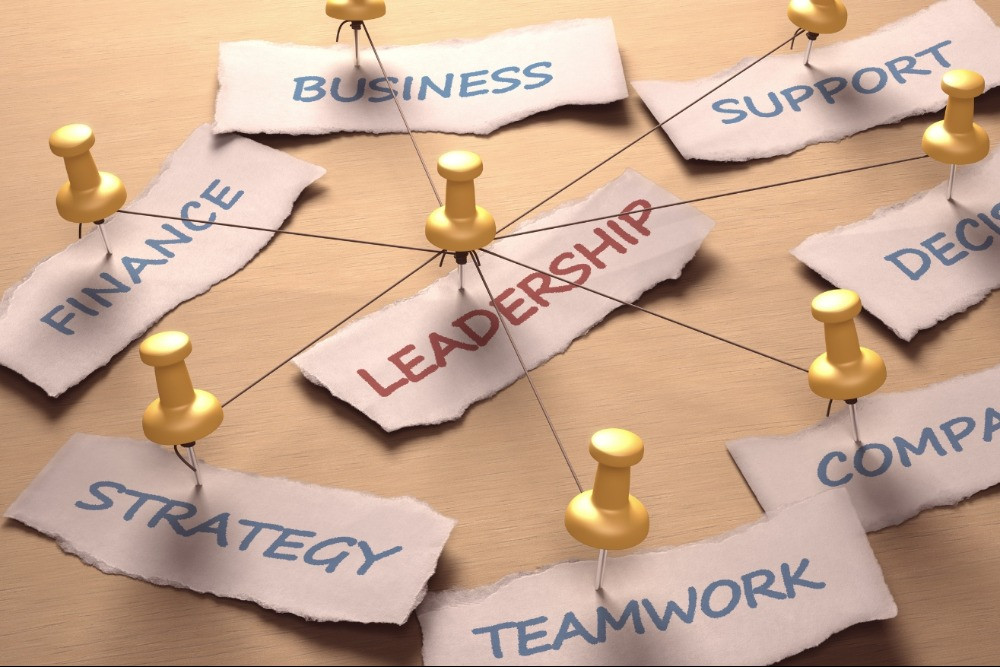What is Meant by Management Function?
Management functions are a general category of responsibilities undertaken by professionals in supervisory roles.
These functions condense many specific tasks and responsibilities into simplified groups so that organizations can delegate responsibilities efficiently and analyze various issues separately.
For example, a company may realize that they need to improve the way they manage recruiting and training.
Rather than reviewing the performance of all its managers, companies will assess those who perform personnel management functions.
What are the Functions of Management?
There are five generally accepted functions of management: planning, organizing, positioning, leading, and controlling. These functions work together in the creation, implementation and realization of organizational goals. The five management functions can be thought of as a process where each one builds on the previous function.
To be successful in their role, managers must follow the five basic functions of management in proper order. First, they must develop a plan, organize their resources and delegate responsibilities to employees according to the plan. Then, they must lead others to execute the plan efficiently. Finally, they must evaluate the effectiveness of the plan as it is executed and make any necessary adjustments. For more details regarding management functions, you can read the explanation below:
A. Planning
In the planning stage, managers set organizational goals and create actions to achieve them. During the planning stage, management makes strategic decisions to determine the direction of the organization. Managers can brainstorm alternatives to achieve goals before choosing the best course of action. When planning, managers typically conduct an in-depth analysis of the organization's current state, consider its vision and mission, and evaluate the resources available to meet organizational goals.
When planning, managers evaluate internal and external factors that may influence the implementation of the plan, such as economic growth, customers, and competitors. They also establish a realistic timetable for achieving goals or objectives based on available financial, personnel, and organizational resources. Managers may take additional steps, such as seeking approval from other departments, executives or the board of directors before moving forward with the plan. There are several approaches to planning:
-
Strategic Planning
This type of planning is often carried out by an organization's top management and usually creates goals for the entire organization. This planning analyzes threats to the organization, evaluates its strengths and weaknesses, and creates a plan for how best to compete in its environment. Strategic planning often has a long time horizon, namely three years or more.
-
Tactical Planning
This type of planning is short-term planning to achieve goals that take one year or less. Tactical planning is often performed by an organization's middle management and is aimed at specific areas or departments within the organization, such as facilities, production, finance, marketing, or personnel.
-
Operational Planning
Operational planning involves the use of tactical planning to achieve strategic planning and goals. This planning creates a time frame for operationally implementing some of the strategic objectives.
B. Organizing
The goal of the organizing step of the four basic functions of management is to allocate resources and assign tasks to personnel to achieve the goals set during the planning stage. Managers often must collaborate with other departments, such as finance and human resources, to manage budgets and staff effectively.
During the organizing stage, managers aim to create a productive work environment by aligning employees' roles with their skills and motivation. Managers should clearly explain each employee's responsibilities when assigning tasks and ensure they understand their role. To increase engagement and productivity, managers must balance workloads and provide enough time for employees to complete their tasks.
Here are some examples of organizing functions:
-
If a company's brand manager works part-time and the organization's goal is to launch a new advertising campaign for a product, the brand manager should not take on significant responsibility for managing that campaign in addition to their regular duties. Companies can hire advertising agencies to help promote products.
-
If a company's sales in a geographic region have grown exponentially, management may plan to split the region in two and need to split the team currently working in the region and hire additional staff members as needed.
C. Staffing
Management determines the organization's staffing needs, deciding how large a team is needed to maximize productivity and quality of work.
In addition to calculating how many employees to hire, managers build candidate profiles for each position, determining the qualifications they want in applicants.
Staffing is critical when starting a business, but remains an equally important function throughout the company's life cycle.
When employees change roles or leave, staffing needs evolve, requiring constant attention.
The main functions of personnel are:
-
Recruiting: Managers use various means to advertise vacancies and find suitable candidates. They may place advertisements online, rely on professional networks for referrals or use recruiting services to find top talent.
-
Interviews: Managers use the interview process to learn more about attractive applicants. Interviews allow organizations to ensure someone will work well with their team and contribute positively.
-
Hiring: Managers ensure employees join the organization legally, gather necessary documents and complete required paperwork.
-
Training: Managers develop orientation routines that introduce new employees to the company and provide them with the training they need. They also train established employees to further develop their skills or teach them new skills.
-
Evaluating: Managers monitor each employee's performance to evaluate their future potential. They typically decide whether to promote or reassign employees who offer value and determine which employees are not a good fit for the company.
D. Leading
Leading consists of motivating employees and influencing their behavior to achieve organizational goals. It focuses on managing people, such as individual employees, teams and groups, rather than tasks. Although managers can direct team members by giving orders and directing them to their teams, successful leaders usually connect with their employees.
This is done by using interpersonal skills to encourage, inspire, and motivate team members to perform to the best of their abilities. Managers can foster a positive work environment by identifying times when employees need encouragement or direction and using positive reinforcement to praise employees when they have done their job well. Managers usually combine different leadership styles and change their management styles to adapt to various situations.
Examples of situational leadership styles include:
-
Directing: Managers lead by making decisions with little input from employees. This is an effective leadership style for new employees who need a lot of initial direction and training.
-
Coaching: Managers are more receptive to input from employees. They can give employees ideas for working together and build trust with team members. This leadership style is effective for individuals who need managerial support to develop their abilities further.
-
Supportive: Managers make decisions together with team members but focus more on building relationships within the team. This leadership style is effective for employees who have fully developed skills but are sometimes inconsistent in their performance.
-
Delegating: Leaders provide little guidance to employees and place more importance on the project vision than day-to-day operations. This leadership style is effective when employees can work and perform tasks on their own with little guidance. Leaders can focus more on high-level goals rather than tasks.
E. Controlling
Controlling is the process of evaluating the implementation of plans and making adjustments to ensure that organizational goals are achieved. During the controlling stage, managers perform tasks such as training necessary employees and managing deadlines. Managers monitor employees and evaluate the quality of their work.
They can conduct performance appraisals and provide feedback to employees, providing positive comments about what they did well and suggestions for improvement. They can also offer salary increase incentives to employees who perform well.
Managers may need to make adjustments such as:
-
Budget Adjustments
Managers monitor budgets and resources to ensure that they are used efficiently and within financial limits.
For example, if a manager realizes that a project is over budget but is unsure of the cause, he or she should investigate whether the overspending is due to a general problem or whether a particular department is responsible.
Once the source of overspending is identified, managers need to take corrective action to reduce spending and make necessary adjustments to balance the budget.
-
Staff Adjustments
Managers may need to make challenging decisions such as whether to reassign employees who produce low-quality work to different tasks or remove them from a project. They may also need to add additional team members to meet organizational goals if they conclude that the team is understaffed. If so, they may also need to consult with the organization's executives to obtain more funding.
What are the Elements in the Management Function?
The following elements are included in the management function:
-
Human
The first element in the management function is humans, this is the most important element because management functions cannot be carried out without humans.
Humans carry out management, starting from planning, organizing, staffing, leadership, to controlling.
When this human element cannot be fulfilled then an organization cannot carry out management functions well.
-
Money
Money is used as a measure of value as well as a medium of exchange.
From this money, you can measure how big or small an activity in the company is.
With this money, it will be easier for management to achieve its goals.
-
Material
Raw materials or materials are also a fairly important part of the management function. From this material, a company can convert raw materials into finished or semi-finished materials.
-
Machine
By using machines, work in the company can run more easily and efficiently.
-
Method
Methods are used to expedite work and are usually known as Standard Operating Procedures (SOP). With this method, companies can use it to carry out work with various considerations, such as objectives, time, costs, costs and existing facilities.
-
Market
The next element is the market or market. From this element, it can be seen whether a product issued by the company is in demand by the market or not. In an effort to dominate the existing market, companies must be able to choose products with the best quality needed by the market.
Conclusion
That was an explanation of the management function and the elements in the management function which can be your reference. From the explanation in the article above, it can be seen that there are 5 (five) management functions, namely planning, organizing, staffing, leadership and controlling. Apart from understanding the functions of management, a company is also obliged to understand the importance of human resource management in the company.
Human resource management in this company is very important because it will determine how a company manages its employees. With good employee management, companies can get the best talents who will fill positions in the company and will ultimately contribute to increasing productivity.







